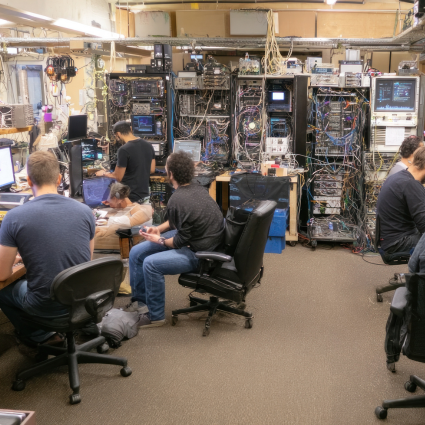On July 6 2018, the Federal Communication Commission (FCC) has issued a set of requirements (Order DA 18-710) concerning network speed and latency measurements. This order primarily impacts Internet Service Providers (ISPs) that have received funds as part of the Connect America Fund initiative. Yet, it’s still a good reference for many ISPs and enterprises that are looking to implement network testing. In this article, I’ll review the set of requirements, as an example of Service Level Agreements (SLA), that can be enforced with network sensors to run active monitoring tests.
Network testing tools
Three networking testing options are permitted by the FCC guidelines:
- Measuring Broadband America (MBA) testing – This is part of an existing network testing framework promoted by the FCC itself and that relies on whiteboxes. Whiteboxes are small hardware appliances that can be deployed around the network.
- Off-the-shelf testing – This option includes existing network management and monitoring tools that implement tests like Ping. In this case, NetBeez would be a good option!
- Self-testing – Service providers can also implement their own network testing. They can use software installed on the residential gateways or running on a different equipment that is attached to a residential gateway – this sounds like a good project for network testing with Raspberry Pi and iperf 😉
Frequency of network tests
The FCC requires service providers to start network testing starting on the third quarter of 2019. Test results are to be submitted by July 1, 2020 and include the third and fourth quarters of 2019. The FCC is very clear about when and for how long tests should run:
- Testing window – Tests should run for one week during each quarter between 6:00 PM and 12:00 AM local time.
- Test frequency latency measurements– For latency testing, tests should run every minute for each of the (above) listed testing windows. If the subscriber’s network consumption exceeds 64 Kbps, then the provider can cancel the measurement until this value is below 64 Kbps.
- Test frequency speed measurements – Service providers should run at least one speed measurement per hour, starting at the first hour of the testing window. Speed measurements should be run both directions, download and upload. Similar to latency, if the subscriber is consuming more than 64 Kbps download and 32 Kbps upload, then testing can be postponed by one minute, until tests are run or canceled for that testing hour.
Network tests results
The FCC guidelines require Internet Service Providers to run these tests with up to 50 randomly-selected subscribers per state (per speed tier in the case of speed tests) and up to 50 randomly-selected subscribers per state in the case of latency measurements.
To comply with the FCC guidelines, 80 percent of the download measurements should be equal to, or higher than, the required download speed. The same holds true for the upload measurements. In the case of the round trip latency measurements, 95% or more of all the latency tests are “at or below 100 ms when measured between the customer premises and a remote server that is located at or reached by passing through an FCC-designated IXP” (Internet Exchange Point).
Conclusion
Are you interested in reading the full copy of the FCC order? If this applies to your company, then please download and review the full DA 18-710 PDF. On page 28 of the PDF, you can find a brief summary of the requirements.





